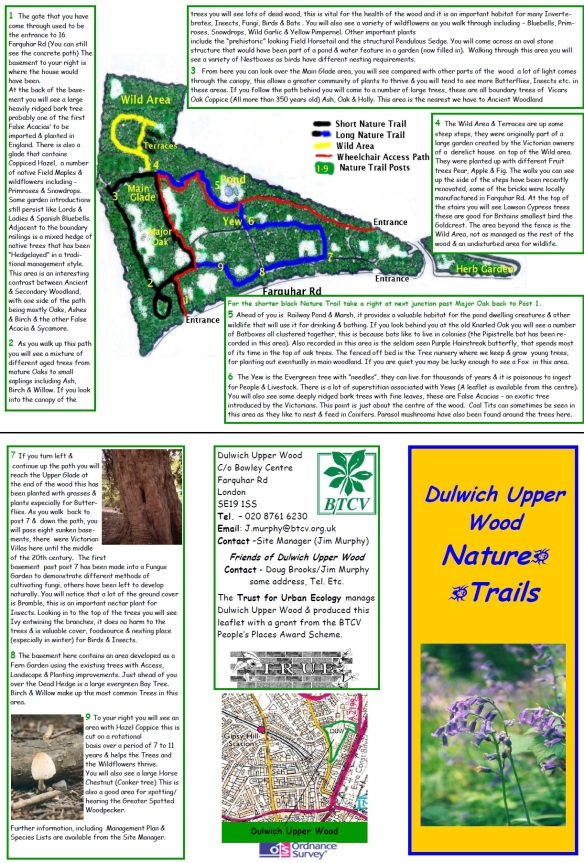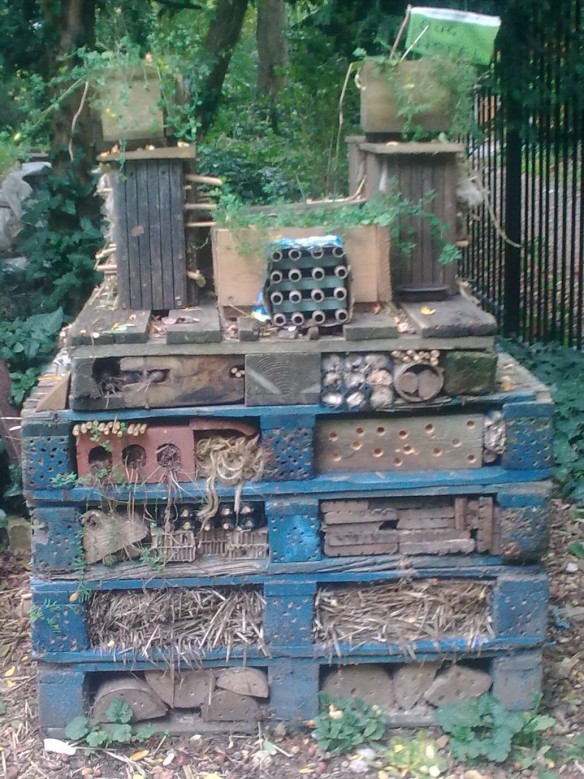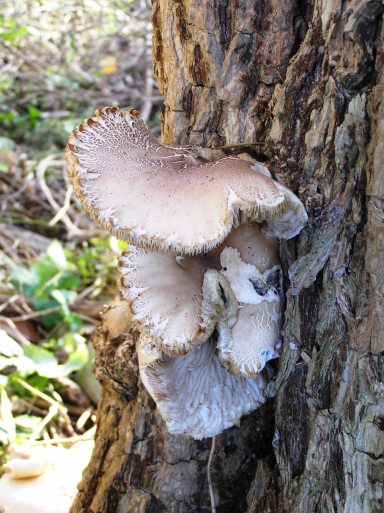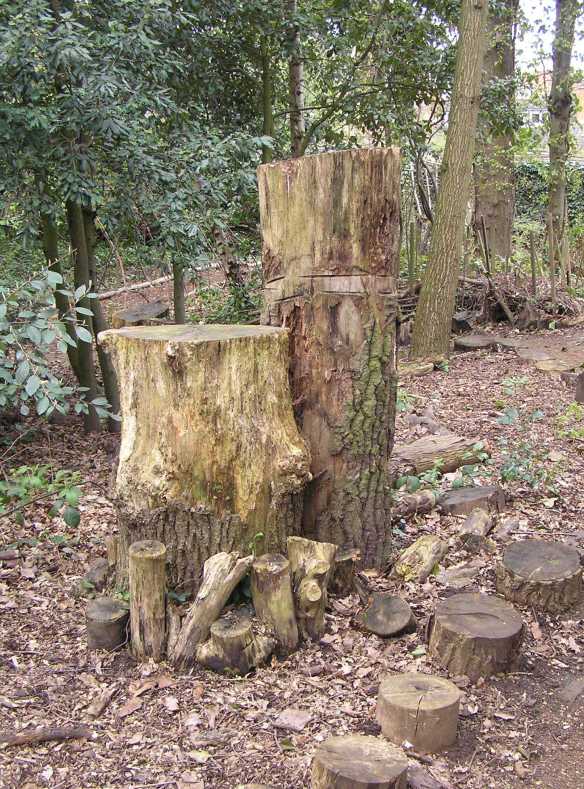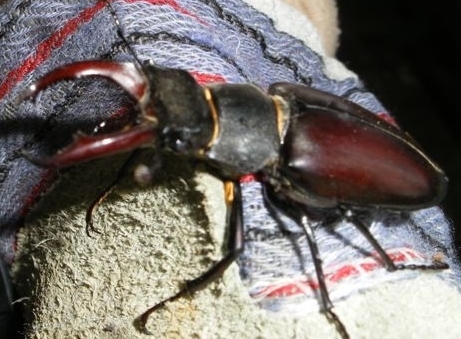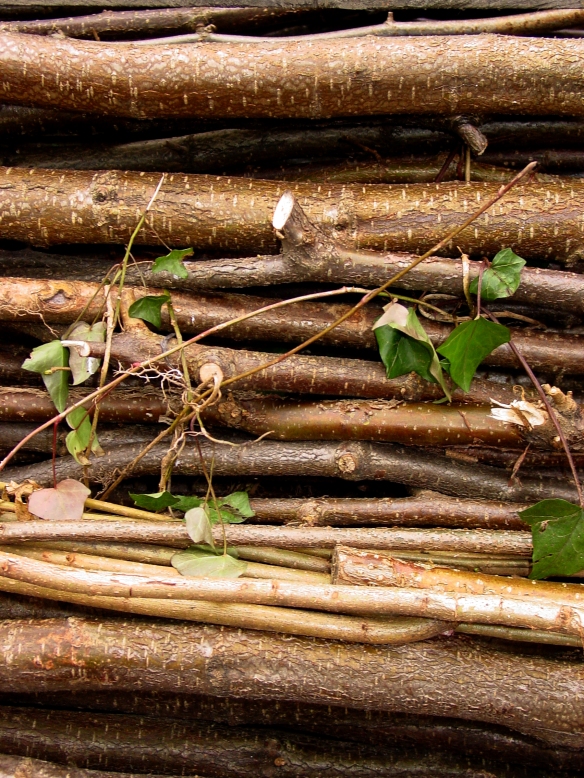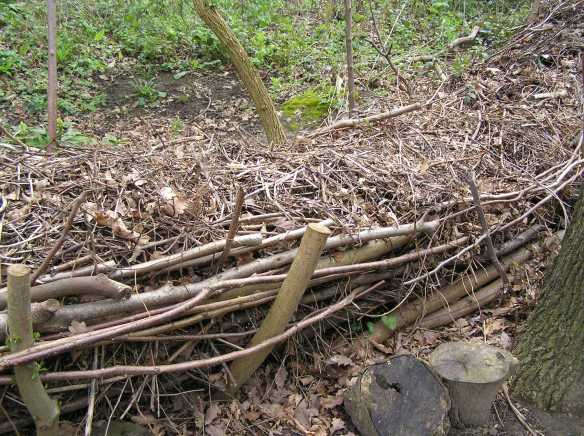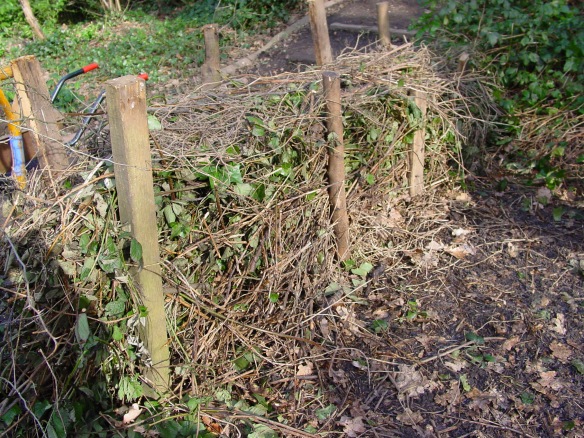This is a copy of our Nature Trail Leaflet for anyone who wants to print it off and come to visit the wood.
Good News!
We are excited to announce that Dulwich Upper Wood has won a Green Flag Award for 2013/2014! The Green Flag Award Scheme recognises and rewards the best green spaces in the country.
For more about the scheme, have a look at their website here: Green Flag Award
In the report, the wood is summed up with the following
“This site has the balance just right – it’s making sure its intrinsic natural and heritage qualities are protected whilst also serving and involving the community…every effort is made to make it feel welcoming and a place to use and enjoy. It’s a credit to its staff and volunteers”
Thank you to everyone working at the wood for helping to make it a beautiful place to visit, this award is recognition for all your hard work.
Who’s Checking In To The Bug Hotel?
All sorts of insects love to stay in a bug hotel, to stay warm, or lay eggs, or hide
from predators, or just to find a meal! Here are a few: Ladybirds, Beetles, Centipedes,
Woodlice, Earwigs, Lacewings, Caterpillars, Butterflies, Moths, Spiders, Funnel
web spiders, Bumblebees, Mining bees, Mason bees, Leaf-cutter bees, Solitary
bees, and many more!
Why is that a good thing?
Bugs play an important part in pollination, which is how plants make more plants. No
pollination would mean no flowers or fruit or vegetables! Bugs also help by adding
oxygen and nutrients to the earth. By improving the soil, bugs help trees grow, and
trees help make the oxygen we breathe.
Are bugs the only guests in the hotel?
Where you have lots of insects, you’ll find birds and bats looking for a tasty bug
meal! Down on the lower parts of the bug hotel, frogs, toads and newts may hide in
winter, away from the frost. We might even get some hedgehog visitors – that’s
why we have logs and a mulch pile at the back of the hotel.
Can I make a bug hotel?
There are lots of different ways you can make homes for insects. You can use wood,
twigs, leaves, earth, straw, hay, lagging, cardboard, string, rope, bamboo, bricks,
and hollow tubes. Bug hotels don’t have to be big, you can even make them out of
plastic bottles. Just remember to have some plants nearby and your bug guests will
be very happy!
To find out more about building a bug hotel, contact us on
Dulwich@tcv.org.uk or phone 020 86716230
Features of the Wood: Fern Garden
The Fern Garden is just off the main path and was planted in 2001.
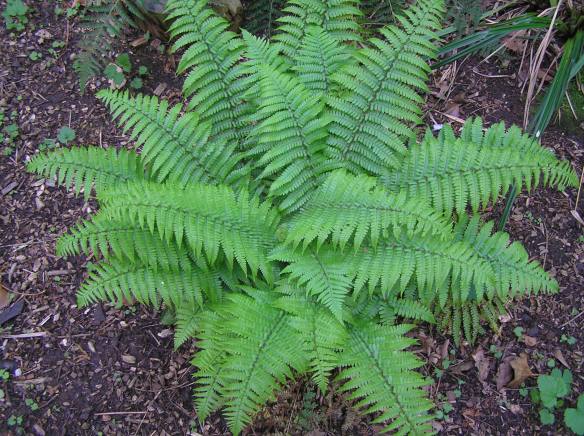 Some of the ferns that can be seen Oak fern, Beech fern, Royal fern, Harts Tongue, Spleenwort. The only one that did not thrive was Hard fern but that is notoriously difficult to grow in the wild.
Some of the ferns that can be seen Oak fern, Beech fern, Royal fern, Harts Tongue, Spleenwort. The only one that did not thrive was Hard fern but that is notoriously difficult to grow in the wild.
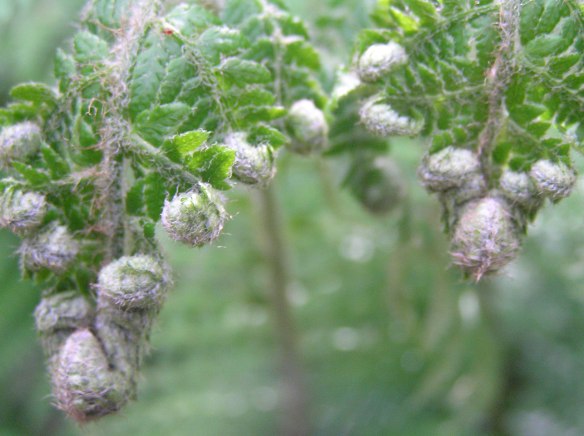 The location seemed perfect for ferns, given the aspect of the site. It’s at the bottom of the wood where water flows down over the clay, in a sunken, slightly out of the way area, in the basement of an old house, so can be viewed well from the paths that encircle the basement. Ferns grow naturally in the wood because there is a lot of tree cover and they are shade loving. Also the Victorians had an obsession with ferns and since the wood was once the site of Victorian houses, some of the ferns we didn’t plant may originate from then. The Fern Garden was recently given a revamp by one of our Volunteer Officers, Marta, and has now returned to its enchanting state.
The location seemed perfect for ferns, given the aspect of the site. It’s at the bottom of the wood where water flows down over the clay, in a sunken, slightly out of the way area, in the basement of an old house, so can be viewed well from the paths that encircle the basement. Ferns grow naturally in the wood because there is a lot of tree cover and they are shade loving. Also the Victorians had an obsession with ferns and since the wood was once the site of Victorian houses, some of the ferns we didn’t plant may originate from then. The Fern Garden was recently given a revamp by one of our Volunteer Officers, Marta, and has now returned to its enchanting state.
The word ‘fern’ comes from the Anglo Saxon meaning feather. Ferns do not have flowers, since they evolved long before flowers did. Ferns first appeared about 350 million years ago, in the Carboniferous period, and were plentiful in the Triassic Period when dinosaurs roamed the Earth. The dinosaurs were wiped out in a major Extinction Event 66 million years ago, thought to be caused by a meteorite bombardment that blocked out the sun with dust and smoke. With the planet in perpetual darkness, the plants died and the food chain collapsed, resulting in a loss of 75% of all species. As the sky began to clear and the fires died down, it was the ferns that returned first, their spores having survived the blackness. They regrew as tough, pollution defying pioneers, preparing the ground for other plants to follow.
Greening the Portakabin
Some good news! The wood has received a grant from Cleaner Greener Safer Southwark Council for “Greening the Portakabin”. Over the year we will be installing habitat walls, a green roof, better security and bat friendly lighting.
We have also signed up to Facebook and can be found here https://www.facebook.com/dulwichupper.wood so please add us as a friend and get involved!
Fungi Courses at Dulwich Upper Wood
Learn all about fungi, identification, foraging and cultivation with experienced mycologists at Dulwich Upper Wood
Identification of Mushrooms & Toadstools (Mycology)
Find out about the main groups of Basidiomycetes & Ascomycetes
- Learn about 3 types of Fungal Association & the features that make up Fungi
- Different types from Stinkhorns to Boletes to Giant Puffballs.
- Good handouts with keys to Agarics etc.
- Identification advice & tips
- Recommendations of websites, books etc.
Good for general fungi interest or for study purposes
Sun 22nd of September 9.30am-4.30pm
Only £40 for the day
Mushroom Growing Course
With a mix of indoor & outdoor activities including
- Ways of growing mushrooms on Compost, Logs etc.
- Sawing & drilling of logs including using mushroom dowels to plug holes.
- Mixing Soil, Mulch, etc. to fill mushroom boxes.
- A Course Handout
- Go home with your own Mushroom Kit. (Small logs or mushroom boxes)
On Saturday 6th July 9.30am-4.30pm
Only £45 for the day.
Ways to recognize Wild Edible Woodland Mushrooms
With a mix of indoor & outdoor activities including
- Best places to find Mushrooms
- Where to find more information
- Edibility Ratings
- Do’s & Don’ts of Picking
- Recipes
On Saturday 7th Sept 2013, 9.30am-4.30pm
Only £40 for the day.
Location and tutors for all courses
Course Tutors
– Clifford Davy, A Mycologist for 25 years, led 150+ Forays, Taken 50+fungal Id courses, Mycology Consultant to Horniman Museum for Fungi for 6 years, Fellow of the Linnean Society, Co founder of Wild Harvest (Run courses on Mushroom & Plant foraging).
– Jim Murphy, Site Manager of Nature Reserve for 20 years, Mycologist for 19 years, led a number of Forays, Taught Fungal Id courses, Consultant to Horniman Museum on Fungi & Nature Conservation, Taught NVQ courses.
At Dulwich Upper Wood Local Nature Reserve, Farquhar Rd, London, SE19 1SS.
Contact Dulwich@tcv.org.uk or J.Murphy@tcv.org.uk or Tel. 0208 7616230 for more details
“Friends of Dulwich Upper Wood” The Friends of Dulwich Upper Wood are a community group who help support this important Local Nature Reserve, through practical work, fundraising etc.
Features of the Wood: Stag Beetle Loggeries
There are a number of stag beetle loggeries in the wood, they are made of tree trunk sections gathered together like tree stump sculptures, the perfect habitat for stag beetles. They lay their eggs near to dead wood and when the larvae hatch they feed on the wood, growing and feeding for seven years before reaching full size.
Stag beetles are an important part of the carbon cycle, they break down dead wood as they feed, so that the carbon (stored as carbohydrate) can be then broken down further by fungi and bacteria and be released to form carbon dioxide. However, stag beetles are a globally threatened species, protected under the Wildlife and Countryside Act 1981 and so we are doing what we can to help in their preservation,
The stag beetle is the largest terrestrial insect in Europe and they usually grow to about 5cm long. Males use their large mandibles to fight one another, but despite their fearsome appearance, they are completely harmless to humans. In recent years their numbers have declined due to the modern tendency to clear away dead wood and the destruction of hedgerows in the countryside. At the wood we have a number of wood piles, dead hedges and loggeries that provide homes not only for stag beetles, but for small mammals, insects and fungi, all essential to keep our ecosystem functioning.
We don’t know how many stag beetles live in our loggeries, but we know there are a fair number, as the photo below shows.
Features of the Wood: Dead Hedges
Around the wood are a number of dead hedges to provide habitats for wildlife. They are made by driving stakes into the ground, using long branches to build a simple framework and then piling dead plant material, branches and leaves, even bramble, onto it. With time the hedge breaks down and sinks, but there are always more cuttings to add.
Dead hedges provide a place for birds to build their nests and for saprophytic fungi to grow (saprophytic fungi grow on dead organic material, breaking it down). They also provide a wind break and shelter for wildlife living near the hedge.
numbers.jpg
Image

Stage beetle photographed at the wood
Image

Stage beetle photographed at the wood

